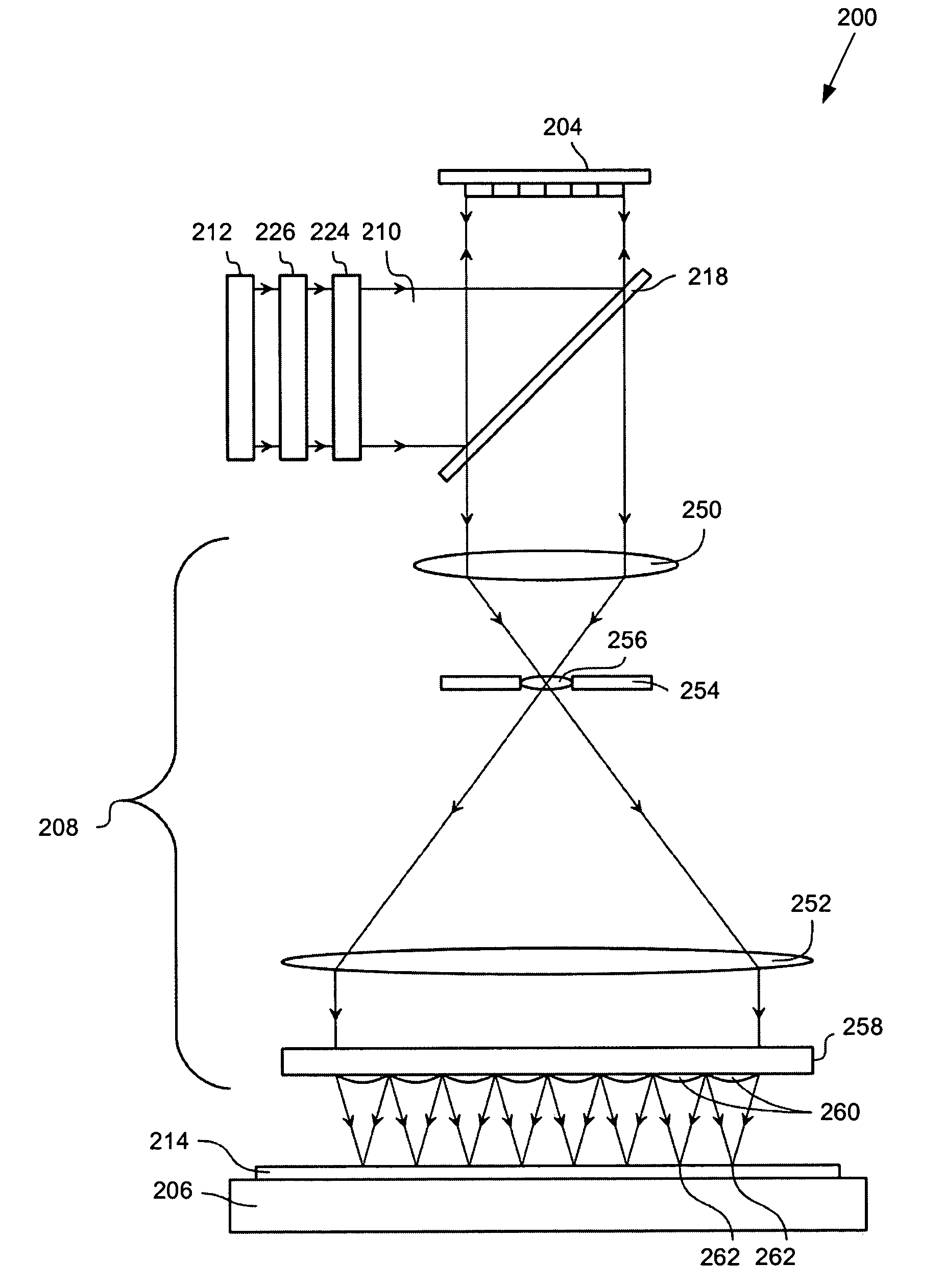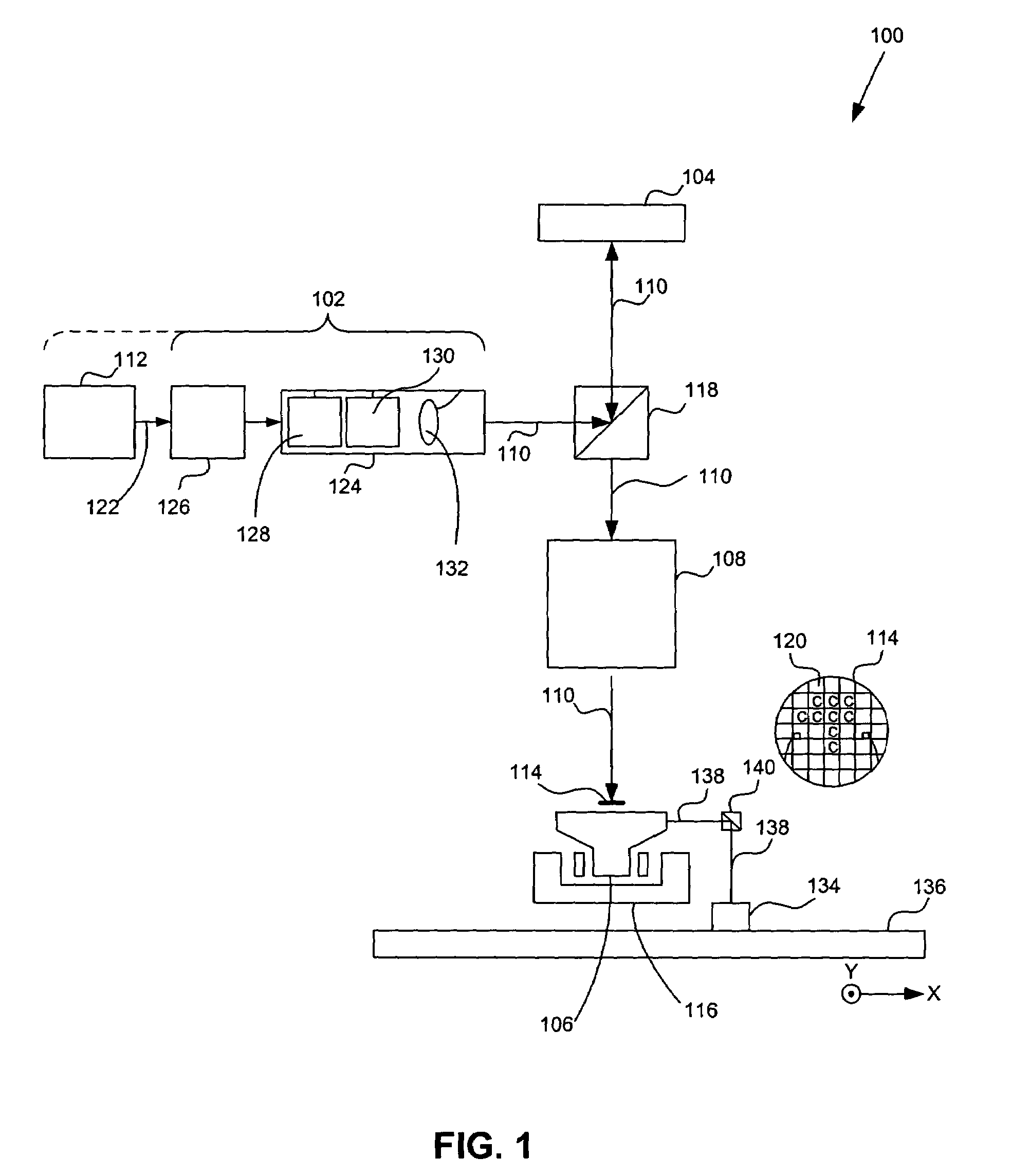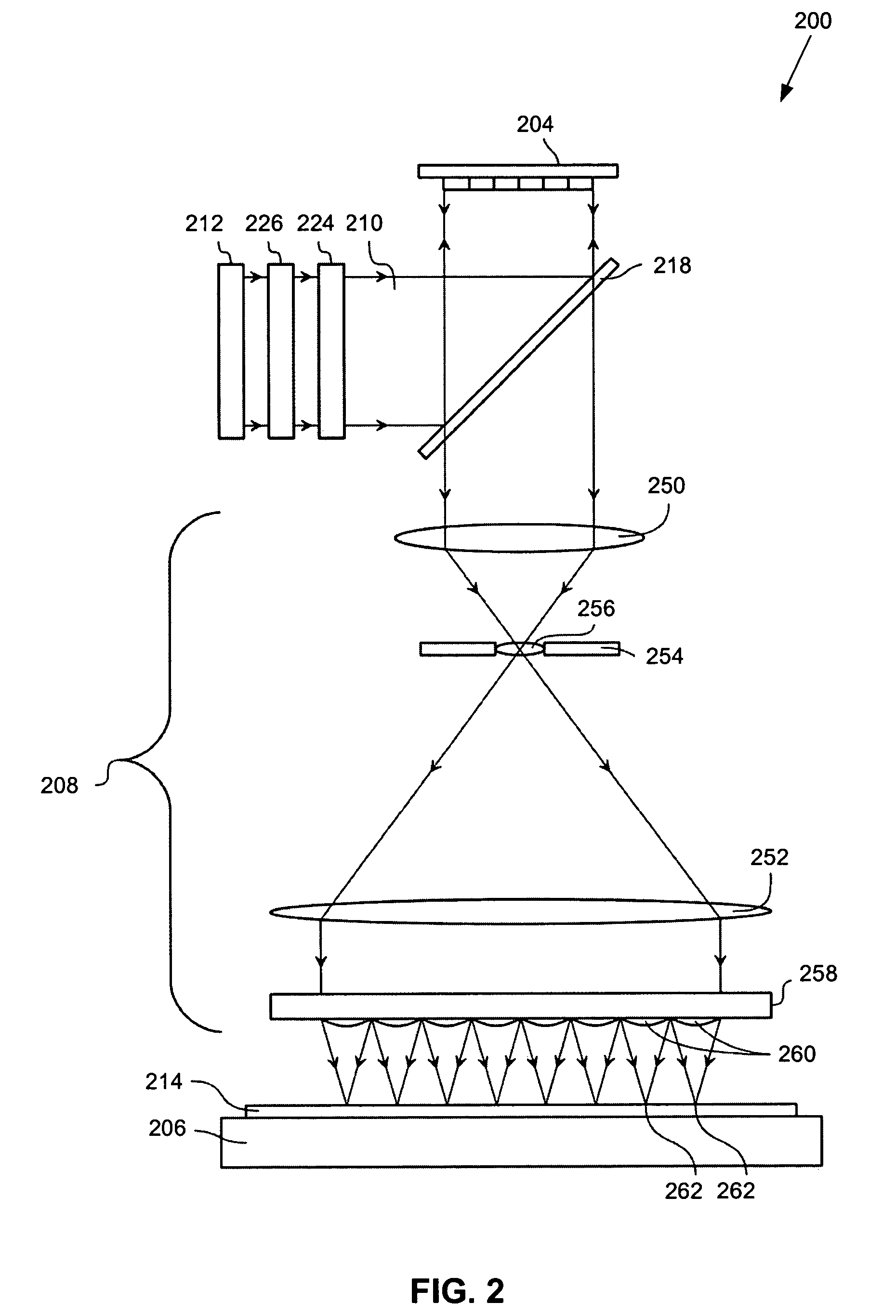Lithographic apparatus and device manufacturing method utilizing data filtering
a technology of data filtering and lithographic apparatus, which is applied in the direction of optical devices, photomechanical devices, instruments, etc., can solve the problems of affecting the quality of the device to be manufactured, the inability to predict the cd properties of the pattern after post-exposure processing, and the inability to apply cd bias in this way only uniformly
- Summary
- Abstract
- Description
- Claims
- Application Information
AI Technical Summary
Problems solved by technology
Method used
Image
Examples
Embodiment Construction
[0044]In one embodiment of the present invention provides a blazing portion in a section of an array of individually controllable elements (e.g., a contrast device).
[0045]All the elements in the blazing portion have their individually controllable elements positioned at a same angle, which forms the blazing portion. In one example, this can be accomplished through use of a super-pixel. The blazing portion is used to increase light intensity in a first diffraction order a beam modulated by the array. This is accomplished by substantially eliminating a negative first diffraction order modulated beam, such that the positive first diffraction order modulated beam has, in effect, about equal to or more than twice the intensity compared to a typical positive first diffraction order modulated beam. For example, when using a λ / 4 tip deflection, substantially all of the incident light is reflected in the first diffraction order.
[0046]In another embodiment, instead of a first diffraction orde...
PUM
 Login to View More
Login to View More Abstract
Description
Claims
Application Information
 Login to View More
Login to View More - R&D
- Intellectual Property
- Life Sciences
- Materials
- Tech Scout
- Unparalleled Data Quality
- Higher Quality Content
- 60% Fewer Hallucinations
Browse by: Latest US Patents, China's latest patents, Technical Efficacy Thesaurus, Application Domain, Technology Topic, Popular Technical Reports.
© 2025 PatSnap. All rights reserved.Legal|Privacy policy|Modern Slavery Act Transparency Statement|Sitemap|About US| Contact US: help@patsnap.com



